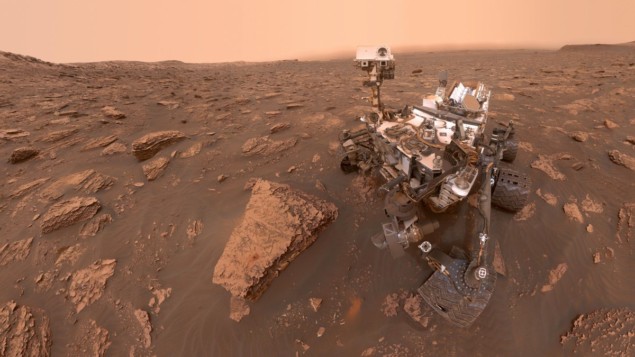
The Moon and Mars are dusty places and this has already caused astronauts some grief. When a landing module approaches the surface of an alien world, its descent is controlled by downward thrusters. These can kick up large amounts of dust, which can obscure the view of the landing site and also coat the spacecraft and nearby facilities in potentially damaging dust.
Now researchers in South Korea and the UK have studied the physics of these thruster-induced “brownouts” with the aim of reducing the threat that they pose to space missions. The team developed a model that describes the interaction between a rocket plume and the surface of a planet in near-vacuum conditions.
The model inputs information about the spacecraft and its engines, as well as the planet’s surface composition, topography, atmosphere and gravity. The simulation then calculates the shape and size of the plume, its temperature and pressure and the amount of material that is displaced from the surface. What is more, the simulation uses significantly less computer resources that previous models.
Efficient landing technologies
“The insights gained from this study of the effects of different parameters on plume-surface interaction can inform the development of more effective and efficient landing technologies,” says Byoung Jae Kim of Chungnam National University.
The research is described in Physics of Fluids.
Georges Lemaître died in 1966, but not before making important contributions to cosmology – in particular his pioneering work on the expanding universe and the Big Bang. A professor of physics at Belgium’s Catholic University of Louvain, Lemaître was also rather famously a Catholic priest.
In Physics, Katherine Wright looks at a rare video interview of Lemaître that was recorded two years before his death. The video was broadcast in 1964 and is about 20 minutes long. Most of it was thought to be lost, but a mislabelled reel has since been found and has been uploaded to the Internet by the Belgian broadcaster VRT. Lemaître speaks in his native French and Flemish subtitles have been added.
Lemaître talks about cosmology as well as religion. Notably, the interview was done before the discovery of the cosmic microwave background – which provided strong observational support for his ideas.
Wright’s article also links to an English translation of the article if you don’t speak French or Flemish.
- SEO Powered Content & PR Distribution. Get Amplified Today.
- PlatoAiStream. Web3 Data Intelligence. Knowledge Amplified. Access Here.
- Minting the Future w Adryenn Ashley. Access Here.
- Source: https://physicsworld.com/a/how-to-land-on-a-dusty-planet-rare-video-interview-of-cosmologist-priest-is-found/



